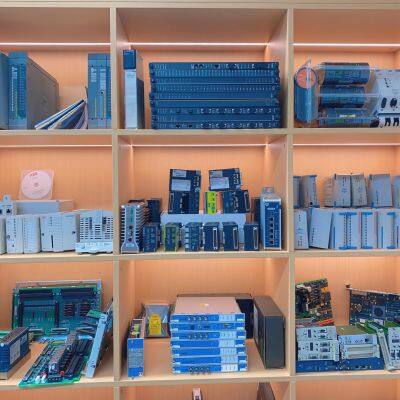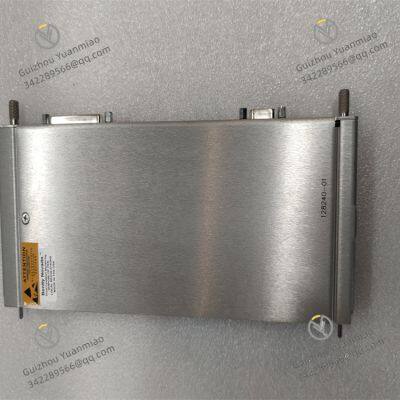Product Description
I. Product Overview
Bently Nevada 128240-01 is a powerful Proximitor/Seismic Monitor I/O module that plays a crucial role in the field of industrial equipment condition monitoring. It belongs to the 3500 series products under Bently Nevada, which has established an excellent reputation in the industrial monitoring and control industry with its outstanding performance and reliability. The 128240-01 module is tailor-made for the 3500/42M Proximitor seismic monitoring system. Its design integrates advanced technical concepts, aiming to provide reliable data support and protection mechanisms for the stable operation of industrial equipment.
II. Functional Features
(1) Data Acquisition and Processing Functions
Multi-channel Data Reception: As a four-channel module, it can simultaneously receive data from proximity sensors and seismic sensors. These sensors convert physical signals during equipment operation into electrical signals, which the 128240-01 module quickly captures and processes. For example, in large rotating machinery, proximity sensors can detect the radial displacement of the shaft, and seismic sensors can sense the vibration generated during equipment operation. The module efficiently aggregates this data through multi-channel parallel processing, providing comprehensive information for subsequent analysis.
Accurate Signal Processing and Measurement Generation: The module has strong signal processing capabilities, capable of performing a series of operations such as filtering and amplifying the collected original signals to remove interference signals and extract valid information. After processing, it can accurately generate vibration and position measurement data. Taking the monitoring of motor operating status as an example, the module can accurately calculate parameters such as the vibration amplitude, frequency, and axial displacement of the motor shaft based on sensor signals, providing an accurate basis for judging whether the motor is operating normally.
(2) Alarm and Protection Functions
User-Programmable Alarm Mechanism: The module allows users to set alarm points according to actual needs. Operators can set corresponding alarm thresholds for various monitoring indicators based on the normal operating parameter range of the equipment. For instance, in the vibration monitoring of a compressor, different levels of alarm values can be set. When the vibration amplitude exceeds the normal range and approaches the preset low alarm value, the module will promptly issue a warning signal; once the vibration amplitude reaches the high alarm value, the module will immediately trigger an alarm, reminding operators to take corresponding measures to prevent further deterioration of equipment failures.
Continuous Comparison and Timely Alarming: The module continuously compares the monitored real-time data with the alarm points set by the user. During this process, it remains highly vigilant, and once it detects that parameters exceed the set range, it will quickly issue an alarm to operators and maintenance personnel. This real-time monitoring and timely alarming function can effectively avoid production interruptions caused by undetectable equipment failures and reduce the operational risks of enterprises.
(3) Flexibility in Channel Configuration
Configuration of Multiple Parameter Measurements: Each channel is highly configurable, allowing users to flexibly select measurement parameters according to the characteristics and needs of the monitored object. Whether it is radial vibration, REBA M (a specific measurement index), thrust position, or speed, monitoring can be achieved through simple configuration operations. For example, in the monitoring of pump equipment, some channels can be configured to monitor the radial vibration of the pump shaft to determine if there is an imbalance in the pump; at the same time, other channels can be configured to measure the thrust position of the pump to ensure the axial stability of the pump during operation.
Adaptation to Different Monitoring Scenarios: This flexible channel configuration function enables the 128240-01 module to be widely applied in various industrial equipment monitoring scenarios. Whether it is a complex large-scale industrial production line or a relatively independent small-scale equipment, comprehensive and accurate monitoring of the equipment's operating status can be achieved by reasonably configuring channel parameters, greatly improving the versatility and applicability of the module.

III. Technical Parameters
Electrical Parameters
Power Supply Related: The module has a certain adaptability to power supply requirements. Although the specific power supply voltage range is not clearly given, in practical applications, it can be adapted to common industrial power supplies, ensuring stable operation in different power environments.
Signal Input and Output: It can accept multiple signal inputs from sensors, such as proximity sensor and seismic sensor signals, and through internal processing, can output signals for functions such as alarming and control, realizing effective monitoring and control of industrial equipment.
Physical Parameters
Dimension Specifications: The external dimensions are 25.4cm x 2.5cm x 11.4cm (9.50 inches x 0.96 inches x 3.90 inches), adopting a compact design structure. This small size allows for flexible layout during installation. Whether installed in a control cabinet with limited space or integrated into the equipment, it does not occupy too much space, improving the compactness and rationality of equipment layout.
Weight: The weight is only about 0.20kg (0.44lb). The light weight reduces costs and difficulties during transportation, facilitating the deployment of the module in different locations; during on-site installation, it reduces the labor intensity of operators, improves installation efficiency, and reduces the risk of errors caused by inconvenient installation.
Environmental Parameters
Temperature Range: The operating temperature range is -40°C to +85°C, with excellent temperature adaptability. Whether in industrial facilities in frigid polar regions, hot tropical factory workshops, or deserts and other areas with large day-night temperature differences, the module can operate stably, ensuring that equipment monitoring work is not affected by temperature changes and guaranteeing the continuity and stability of industrial production.
Humidity Requirement: It can work normally in an environment with a relative humidity of up to 95% (non-condensing). This means that even in humid industrial environments, such as factories in coastal areas and underground mines, the electronic components inside the module can be effectively protected, avoiding short circuits or other faults caused by humidity issues, and extending the service life of the module.
IV. Application Scenarios
Industrial Production Equipment Monitoring: In various industrial production processes such as chemical, steel, and papermaking, the stable operation of a large number of mechanical equipment is crucial. The 128240-01 module can be installed on key equipment, such as large compressors, pumps, and motors. Taking chemical production as an example, the compressor, as a core equipment, its operating status directly affects the stability of the production process. Through real-time monitoring of parameters such as vibration and displacement of the compressor by the 128240-01 module, once abnormalities are found, such as increased vibration and excessive shaft displacement beyond the normal range, the module immediately issues an alarm, allowing operators to take timely maintenance measures to prevent the interruption of the entire chemical production process caused by compressor failures and avoid huge economic losses.
Power System Equipment Monitoring: In power generation, transmission, and distribution systems, the reliable operation of many equipment is related to the stability of power supply. For generators, the 128240-01 module can timely determine whether there are problems such as imbalance of the generator rotor and displacement of windings by monitoring parameters such as vibration and shaft displacement, ensuring the safe and stable operation of the generator and guaranteeing the normal power supply of the power system. In transmission lines, monitoring equipment at some key nodes, timely detecting abnormal situations such as loose connections caused by vibration and displacement of equipment, and conducting maintenance in advance can improve the reliability of power transmission and reduce the frequency of power outages.
Oil and Gas Industry Monitoring: In oil extraction, refining, and natural gas transmission, equipment is often in complex and harsh environments. At oil extraction sites, during the high-intensity operation of the drilling rig, the 128240-01 module can timely detect wear and looseness of drilling rig components by monitoring parameters such as vibration and displacement, arrange maintenance in advance, avoid interruption of extraction operations due to drilling rig failures, improve oil extraction efficiency, and ensure the stability of energy supply. In the process of natural gas transmission, monitoring equipment such as compressors to ensure their stable operation under harsh conditions such as high pressure and high vibration can prevent safety accidents such as natural gas leakage caused by equipment failures.


Honewell CC-TAIX11 C300 Controller
Honewell CC-TAIX51 C300 Controller
Honewell CC-TAON11 Analog Output Module
Honewell CC-TAOX11 Analog Output Module
Honewell CC-TDIL01 Digital Input Module
Honewell CC-TDIL11 Digital Input Module
Honewell CC-TDOB11 Digital Output 24V Module
Honewell 05704-A-0145 Four Channel Control Card
Honewell 05704-A-0121 Elay Interface Card
Honewell 900ES1-0100 Serial Communication Module
Honewell 05704-A-0146 Fire Control Card
Honewell CC-TAIX01 Analog Input Module
 yezi
Hi there! Welcome to my shop. Let me know if you have any questions.
yezi
Hi there! Welcome to my shop. Let me know if you have any questions.


